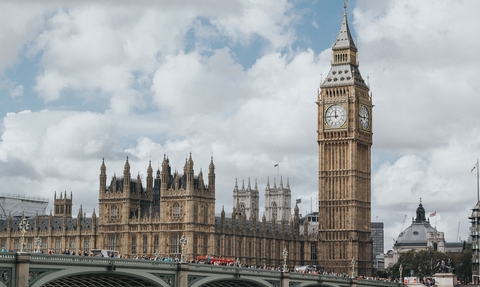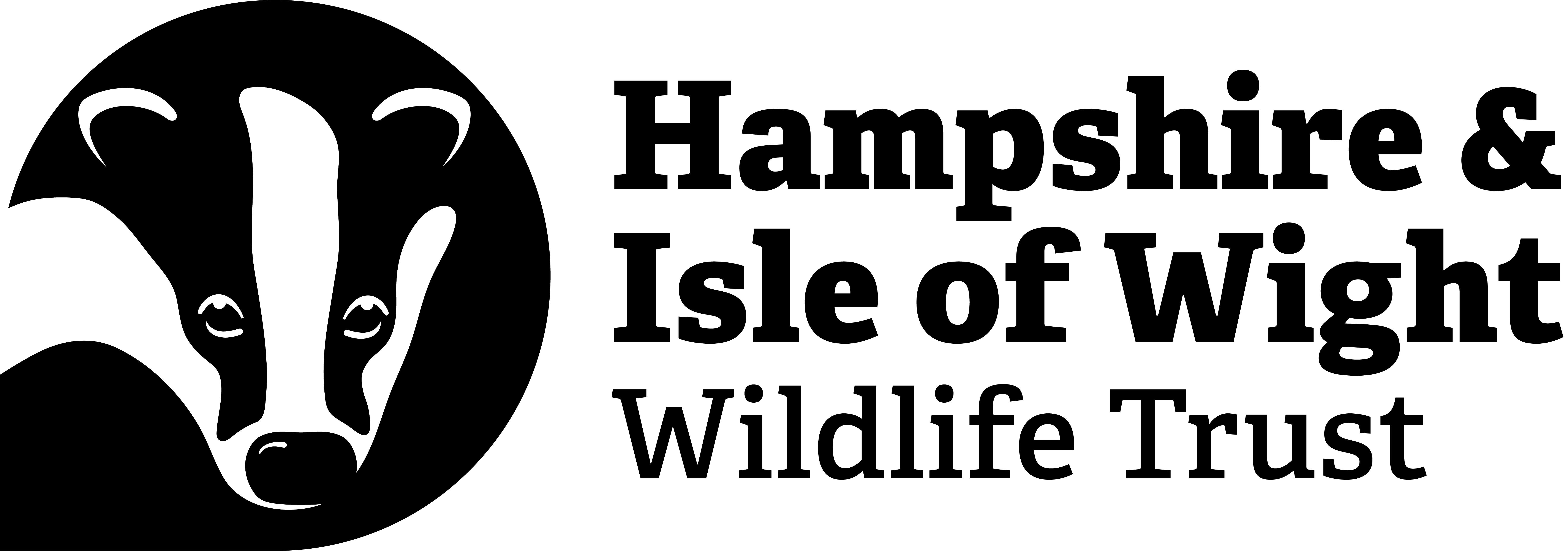
The Campaigning Toolkit
Meeting your MP
Over half of all Members of Parliament (MPs) who were elected in the 2024 General Election were new to the role. This includes 10 newly elected MPs across our 21 constituencies in Hampshire and the Isle of Wight! This means there are a lot of new decision-makers who haven’t yet got much experience of the climate and nature issues that you care about. This means now is the perfect time to meet them in person to start that relationship.
This section will provide you with the tools you need to talk to your representatives about nature and climate. From how to contact your MP, to building confidence around meeting up, this guide should provide support every step of the way.
Step 1 – Getting in touch
Contacting your MP is one of the first steps in getting to know your local decision-makers. There are several ways you can get in touch, including via post, email, phone.
Your best option for meeting your MP is to ask them to meet in your constituency office. You may find it easiest to meet them during one of their constituency surgeries, which they hold at least once a month. This is when your MP meets their constituents to talk about things affecting them and for people to raise concerns about political or local issues, so it’s the perfect time to tell them why nature’s recovery matters to you!
You can find out who your MP is and their contact details by using this tool: Find your MP
If no contact details for their constituency office is provided, simply write to the email address or call the number of their Parliamentary office. You could also write a letter requesting a meeting to this office. The Parliamentary address is:
[MP’s Name]
House of Commons,
London,
SW1A 0AA
When you ask for a meeting, explain what you want to meet your MP about and offer some times and dates you’d like to meet. You likely won’t get an appointment for 4-6 weeks, so book early! You may have to be flexible about meeting – MPs have full diaries but are good at making time for everyone.
Don’t forget to include your full postal address on anything you write to your MP, so they know you live in their constituency.
Step 2 – Confidence
Whether it is an MP or a Councillor, confidence is key to having a great conversation.
There is one important thing to remember: they are people! Sometimes they may feel out of their depth, and sometimes they can be very helpful. It is very normal to feel anxious about speaking to someone who is ‘official’. If you would like support in meeting your MP, reach out to myself at lorna.selby@hiwwt.org.uk and I will try to organise for someone from the Trust to go with you!
It may help you to feel more confident if you prepare your message for your MP. We will provide advice for tailoring your message in the next section.
Step 3 – Preparing your message
Step 3 – Preparing your message
When contacting MPs, it’s easy to focus on issues but don’t forget to also talk about opportunities and solutions! It’s helpful to have a real-life example of an issue in your local area, and what you feel a solution could be. It is useful to find common ground between what you care about and what your MP cares about, to motivate action on behalf of a shared purpose.
Thinking about how to curate your story can help to develop an impactful message that your MP will feel obligated to act on. To develop an engaging narrative, consider:
-
A story of now: What urgent challenge do you hope to inspire your MP to take action on? What is your vision of successful action? How can they begin to achieve this now?
-
A story of us: What values, experiences or aspirations do you and your MP share? How can you appeal to these when you call on them to act? What stories can you share that express these values?
-
A story of self: Why were you motivated to meet with your MP? How can you enable your MP to experience the values that motivate you to act?
Step 4 – The meeting
Arrive early is possible, this is a great opportunity to get to know the MP’s staff – who can be useful to contact about future meetings. When speaking to your MP, explain the issue and ask your MP for their opinion on it. Make sure to note down anything that your MP agrees to do about the issue.
Consider asking what you can do to help them – for example, would a briefing on the issue help them?
If you are meeting your MP in-person, you may want to take a photo with your MP for later use on social media. To make this more eye catching, you may want to bring a placard for your cause.
Step 5 – Following up with your MP
Always send an email or letter to your MP after you meeting to thank them for meeting you and remind them of what actions they have agreed to take. You can also include any further information that they have asked you for.
For support with writing a follow-up briefing for your MP, feel free to contact me: lorna.selby@hiwwt.org.uk. It is important to keep it short (2 pages or less), highlighting the issue, the solution and how your MP can help.
To further promote your cause, you can send a report and a photo of your meeting to your local newspaper – with a quote from you and your MP if possible. You can also share a report of your meeting and a photo on social media – making sure to tag your MP and Hampshire & Isle of Wight Wildlife Trust.
Asking a Parliamentary Question
One way to put an issue on the agenda is to request that your MP ask a parliamentary question to the relevant Government minister.
MPs can submit these questions for answer orally (in the Commons) or in writing – so you may wish to state which you prefer in your request. There are two purposes for parliamentary questions: to seek information from ministers and to press them for action. Language in these questions must be concise, courteous and require neutral phrasing.
Who to contact
A list of Government Ministers can be found here. It is likely that your questions will be directed to:
-
Steve Reed, the Secretary of State for the Department of Environment, Food and Rural Affairs. [For nature recovery and farming related questions].
-
Angela Rayner, Secretary of State for Housing, Communities and Local Government. [For planning and development related questions]
What to ask
Below are some example parliamentary questions that we have sent to MPs in the past:
‘To ask the Secretary of State for Environment, Food and Rural Affairs whether his department has plans to include the protection of chalk streams as a key element in the upcoming review of our water system, given their unique ecological significance’.
‘To ask the Secretary of State for Housing, Communities and Local Government what assessment she has made of the potential for enhanced protection of chalk streams in planning reforms’.
More examples of parliamentary questions (and their answers!) can be found here.
Attending marches and protests
Hampshire & Isle of Wight Wildlife Trust has previously attended several peaceful and legal marches, including Restore Nature Now and the March for Clean Water. Marches like these are valuable to campaigning for multiple reasons:
-
Show politicians the strength of feeling and the need for urgent action
-
Help the public vocalise with one voice the mass outrage that’s felt, and demonstrate to policymakers the public health emergency that we’re all facing, on everyone’s behalf
Attending a march
Consider accessibility along the route and nearby accessible transport/ rail stations. The National Rail Accessibility Map may be useful for co-ordinating national travel plans and for London travel plans – this webpage is useful.
On the day
-
Wear comfy shoes and weather-appropriate clothing
-
Bring a water bottle (avoid single use plastic)
-
Bring a charged phone and tech equipment as needed for social media activity
-
Bring banners or signs, costumes – anything to grab the attention of passers-by!
-
Take all banners and rubbish home with you
The Wildlife Trusts, like other charities, do not use or support disruptive or illegal activity to achieve our aims but we understand those who feel the need to demonstrate their frustration and desire for change, and we fully support everyone’s right to do so peacefully and legally.
Should you see or hear anything that concerns you - for example suspicious items, actions intended to interrupt the event, aggression or other activity/behaviour - or which makes you at all uncomfortable about the way the event is going, or if you notice potential disruptive activity:
-
Highlight this to your emergency contact, and post on the WhatsApp group
-
Share or report concerns about disruptive behaviour to stewards or police
-
Listen to advice of stewards and police. Move to a safe place accordingly or go directly home.

Hampshire & Isle of Wight Wildlife Trust staff at the Restore Nature Now rally
Sending a letter to the Editor
Sending letters to the editor of local newspapers is a great way to speak up for wildlife, as well as writing to your MP and Ministers and using social media to comment on issues and share campaigns.
By writing a letter to the editor, you can make an impact in lots of ways:
-
Letters reach a large audience, both online and offline.
-
They will often get noticed by your MP's office, especially if you include their name in the letter.
-
You can highlight more details or information not addressed in a news article.
-
Letters can help create an impression of widespread support for, or in opposition to, an issue.
Using our e-action
Our e-action can help to guide you through the process of writing a letter to your local newspaper editor, linked here.
This will match your postcode with your local paper and provide useful tips to help you write a letter to speak up about issues affecting wildlife and nature.
Speaking to your local council
When speaking to your local council, it is important to know who is responsible for which areas of local government – this can vary across the UK.
How to do it
Most councils will have a website with a list of departments and contacts that you need. If you can’t find what you’re looking for, you may have to phone or email their reception to ask.
If you are sending an email to someone at the council, stay polite, even if you feel very angry about something. Briefly outline the reason you are emailing, tell them what you want them to do (e.g. meet with you).
When meeting with a councillor, follow the steps above in ‘Meeting with your MP’ to help you prepare!
Responding to planning developments
Anyone who lives or works locally has a right to be involved in the planning process and express their views. Your council has a responsibility to make planning decisions in the best interests of the area, so your views are important and can affect the council’s decision. If you are concerned about a development that may threaten wildlife, you will need to submit comments in writing.
Who to contact
Hampshire County Council deal with planning applications that relate to minerals (quarrying), waste and County Council developments such as schools, libraries and new roads.
District Councils (Local Planning Authorities) generally deal with other types of developments, including domestic extensions, residential and business developments, barn conversions, solar farms, etc. These include:
-
Basingstoke & Deane Borough Council
-
East Hampshire District Council
-
Eastleigh Borough Council
-
Fareham Borough Council
-
Gosport Borough Council
-
Hart District Council
-
Havant Borough Council
-
New Forest District Council
-
Portsmouth City Council
-
Rushmoor Borough Council
-
Southampton City Council
-
Test Valley Borough Council
-
Winchester City Council.
If you are looking to respond to a planning application on the Isle of Wight – you will require the Isle of Wight Council, who are a unitary council dealing with both types of development discussed above.
Within the South Downs National Park and New Forest National Park, all planning applications are determined by the National Park Authorities.
You can view all submitted planning applications online or at the relevant local District Council office or County Hall.
Local Plans
District Councils are required to prepare Local Plans which are normally reviewed at 5 yearly intervals. These identify broad areas which can be developed for industry, retail and housing. Once an area has been identified for housing, for example, it is much more difficult to successfully oppose individual Planning Applications.
More information about local plans can be found on The Planning Inspectorate YouTube channel, available here. This series is split into 5 short videos which explain the process of forming a local plan and where you can get involved.
Neighbourhood Plans
Neighbourhood Plans sits alongside the local plan and are used in the determination of planning applications. Policies within these cannot block development, as that is already part of the Local Plan. These plans can shape where development will go and what it will look like.
How to submit your comments
Written comments can be submitted online, by email or by post.
Search for planning application by location on the relevant Council website. You can search by planning application number or by address/postcode. The website will show you more information about the proposal including site plans and drawings of the buildings as well as any comments made by other people.
Submit written comments by email quoting the application number and marked for the attention of the case officer, whose name can be found on the consultation letter, site notice or press advert.
If you send letters to the planning department, make sure to quote the application number and case officer name.
Make sure to give your comments within the time period stated on the council website, so that your views are taken into account. You should be aware that written comments are not treated as confidential.
Crafting your comments
Before you begin, ensure that you do your research and have read the relevant planning application, do not rely on what someone else has told you or make assumptions. Keep your comment brief and focused – two pages is more than sufficient.
Many planning applications will include a Wildlife Survey, Ecological Survey or similar. This will identify any species of flora and fauna on the site and propose measures to mitigate the impact of the development and enhance it for wildlife. They will only identify wildlife that is on the site at the time of the survey. Often, they will approach Hampshire Biodiversity Information Centre to see what other wildlife have been recorded there. If you see wildlife near you it is very useful to report it to HPIC here. Please also be aware that many fields are very intensively managed and although they may appear to be attractive green spaces, do not support much wildlife.
When you make a comment, it is important to focus on relevant facts rather than personal feelings. You should not assume that the mention of a protected species alone will be enough to halt or alter a development, but you can use your local knowledge to highlight species and habitats of concern.
Your comment must be made on the basis of ‘material considerations’. Material considerations can include conservation status of site, traffic or noise pollution or impact on natural environment, for example loss of trees.
Non-material considerations should not be included. These are things such as a loss of view or negative effect on the value of properties.
Keep track of the planning application by going back to the website from time to time. Amendments may be made, there may be further consultations, or you may wish to submit further comments on the basis of new information. The final decision will be published there, together with any special planning considerations.
Involve your local community
tool to illustrate your community’s concern, as individually letters may be given greater weight as a better reflection of personal views.
Your parish or town Council are elected to represent the views of their community directly to the district and county councils on matters of local concern, so ensure these individuals are aware of your views.
Unfortunately, Hampshire & Isle of Wight Wildlife Trust do not have the resources to respond to every planning application that impacts wildlife across our two counties. The Trust take a proactive approach, prioritising responding to strategic plans, such as local plans, and challenging the most damaging proposals as well as failures in the system, where they impact legally protected sites for nature, our nature reserves or set a dangerous precedent.
For more information on responding to planning applications in your area, see our detailed guide here.
Key points to consider when writing comments
▪ Presence of or proximity to designated sites including SPA, SSSI, SAC, RAMSAR
▪ Presence of legally protected species such as badgers, dormice, great crested newts
▪ Adverse effects on conservation priority species, such as those listed on the NERC ACT 2006
▪ Direct loss or fragmentation of wildlife habitats including loss of ancient and veteran specimens and UK BAP Priority Habitats
▪ Impact on the landscape and character of an area
▪ Water quality including the effects of eutrophication caused by excessive phosphates
▪ Opportunities for creation, restoration and/or enhancement of wildlife habitats and corridors
▪ Opportunities for mitigation and adaptation for climate change
